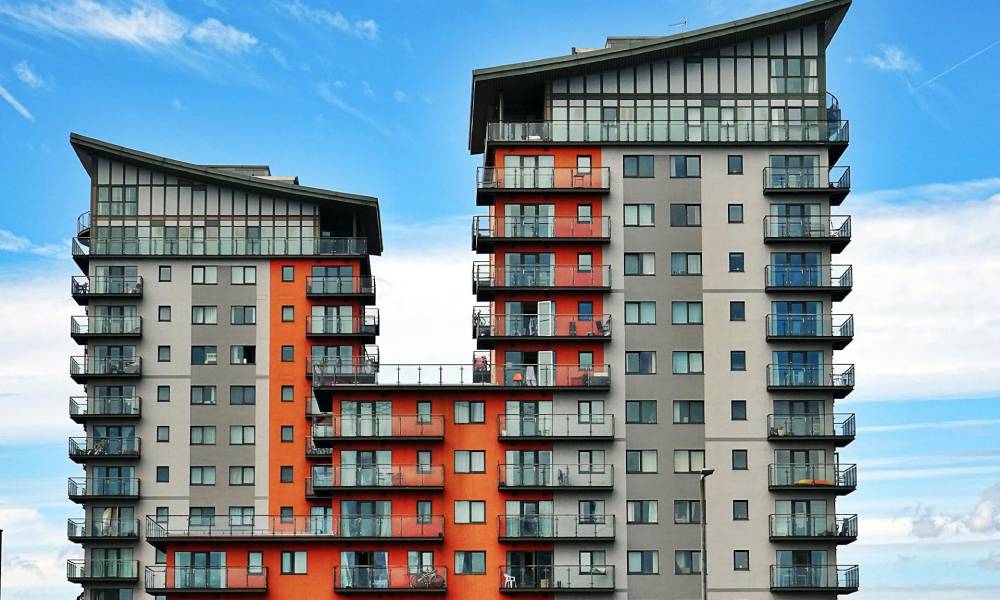For anyone living in a flat in the UK, understanding what does building insurance cover in flats is not just important—it’s essential. Many leaseholders assume their home insurance is enough, only to find that it doesn’t cover the structural elements of the building. Building insurance is specifically designed to protect the walls, roofs, floors, and permanent fixtures of a property, ensuring that the block remains safe and secure.
The responsibility for arranging building insurance usually falls to the freeholder or landlord, with leaseholders contributing through their service charges. However, knowing what is covered and what is excluded can help you avoid unpleasant surprises later. From fire damage and floods to the protection of communal spaces, building insurance provides peace of mind that the property’s structure is safeguarded.
What is Building Insurance?
Building insurance is a policy that covers the physical structure of a property. Unlike contents insurance, which protects your personal belongings, building insurance looks after the bricks and mortar of the building itself. This includes the foundations, roofs, external walls, and any permanent fixtures such as fitted kitchens and bathrooms. Without it, the financial burden of rebuilding or repairing after major damage would be overwhelming.
In the UK, building insurance is often mandatory if you have a mortgage, as lenders want to be sure their investment is protected. Policies vary depending on whether you own a house, a flat, or a commercial building. Some providers even offer combined home and building insurance packages, while others specialise in niche areas such as listed building insurance or landlord building insurance.
What Building Insurance Covers in Flats
So, what does building insurance cover in flats specifically? For leaseholders, the policy arranged by the freeholder usually includes the cost of repairing structural elements such as floors, roofs, and walls. Permanent installations like bathrooms, fitted kitchens, and built-in wardrobes are also protected. This ensures that in the event of a disaster, you won’t face the cost of rebuilding from scratch.
Communal areas are another key aspect of cover. Hallways, lifts, stairwells, shared gardens, and even bin stores are often included in the policy. Building insurance also protects against specific perils such as fires, floods, storms, subsidence, vandalism, and burst pipes. However, it does not cover your personal belongings or damage caused by gradual wear and tear, so contents insurance is also recommended.
Responsibilities of Flat Owners and Landlords
When considering what does building insurance cover in flats, it’s important to understand who is responsible for arranging it. In most cases, the landlord or freeholder will take out a policy covering the entire block, with leaseholders contributing their share through service charges. This ensures that every flat in the building is equally protected under one comprehensive policy.
Leaseholders, however, are not entirely free of responsibility. Depending on the lease agreement, you may be required to maintain internal fixtures or certain pipework within your flat. Understanding these obligations is crucial, as insurers like Towergate building insurance and Admiral building insurance often set clear terms regarding shared and individual responsibilities. Misunderstanding these rules could leave you exposed to unexpected costs.
How to Compare and Buy Building Insurance
If you’re wondering what does building insurance cover in flats, another key consideration is how to find the best policy. Using comparison tools is one of the most effective ways to evaluate different options. When obtaining a building insurance quote, factors such as location, property type, and risk profile will all influence the premium. Flats in flood-prone areas, for example, are likely to have higher costs.
It’s also worth remembering that cheap building insurance isn’t always the best option. While saving money is attractive, you need to ensure the policy covers everything your flat requires, including communal spaces. Trusted providers such as John Lewis building insurance, Tower Gate building insurance, and Admiral building insurance offer comprehensive options. Comparing providers allows you to balance affordability with reliability.
Special Considerations for Flats
Not all flats are the same, and this means building insurance can vary widely. Listed or historic flats, for example, require listed building insurance. These properties often need specialist care and restoration materials, which can significantly increase the cost of rebuilding. Insurance providers who specialise in these properties understand the unique risks involved.
High-rise flats also present unique challenges. Additional safety requirements, larger communal systems, and the presence of lifts and shared corridors make coverage more complex. Optional add-ons, such as accidental damage or cover for loss of rent, can provide an extra layer of protection. Leaseholders should always check the policy details to ensure their flat is covered for its specific risks.
The Cost of Building Insurance
Another common question alongside what does building insurance cover in flats is: how much does it cost? The cost of building insurance depends on a variety of factors, including the property’s age, location, and rebuild value. Flats located in cities may have different premiums compared to rural areas, while high-rise developments often come with additional considerations.
When calculating premiums, insurers also look at the materials used in construction, whether the building is listed, and its vulnerability to risks such as flooding or subsidence. While you can find cheap building insurance through comparison sites, it’s vital to ensure the policy doesn’t leave gaps in coverage. Cutting corners might save money upfront, but it could cost you far more in the long run.
Conclusion
Understanding what does building insurance cover in flats is essential for every leaseholder in the UK. From structural repairs to communal areas, a good policy ensures that the property remains protected against risks like fire, floods, and storms. While landlords and freeholders usually arrange the policy, leaseholders must be aware of their obligations and any additional responsibilities.
Comparing providers, considering specialist policies for listed or high-rise buildings, and evaluating costs all play a part in ensuring comprehensive protection. Ultimately, building insurance is not just a financial safety net—it’s a vital safeguard for your home, your investment, and your peace of mind.
FAQs
What is the difference between building insurance and contents insurance for flats?
Building insurance covers the structure and fixtures, while contents insurance protects personal belongings inside your flat.
Who is responsible for building insurance in a block of flats in the UK?
Usually, the freeholder or landlord arranges building insurance, with leaseholders contributing through service charges.
Does building insurance cover flood and storm damage?
Yes, most policies include cover for natural events such as floods, storms, and subsidence.
Can I get cheap building insurance for my flat?
Yes, by comparing quotes from providers like Admiral, John Lewis, or Towergate, but ensure the policy covers everything you need.
Do listed flats need special building insurance?
Yes, listed building insurance is required for properties with historic or architectural significance, often at a higher cost.
You may also read: New Housing Developments Liverpool – Your Complete Guide to Finding the Perfect Home



